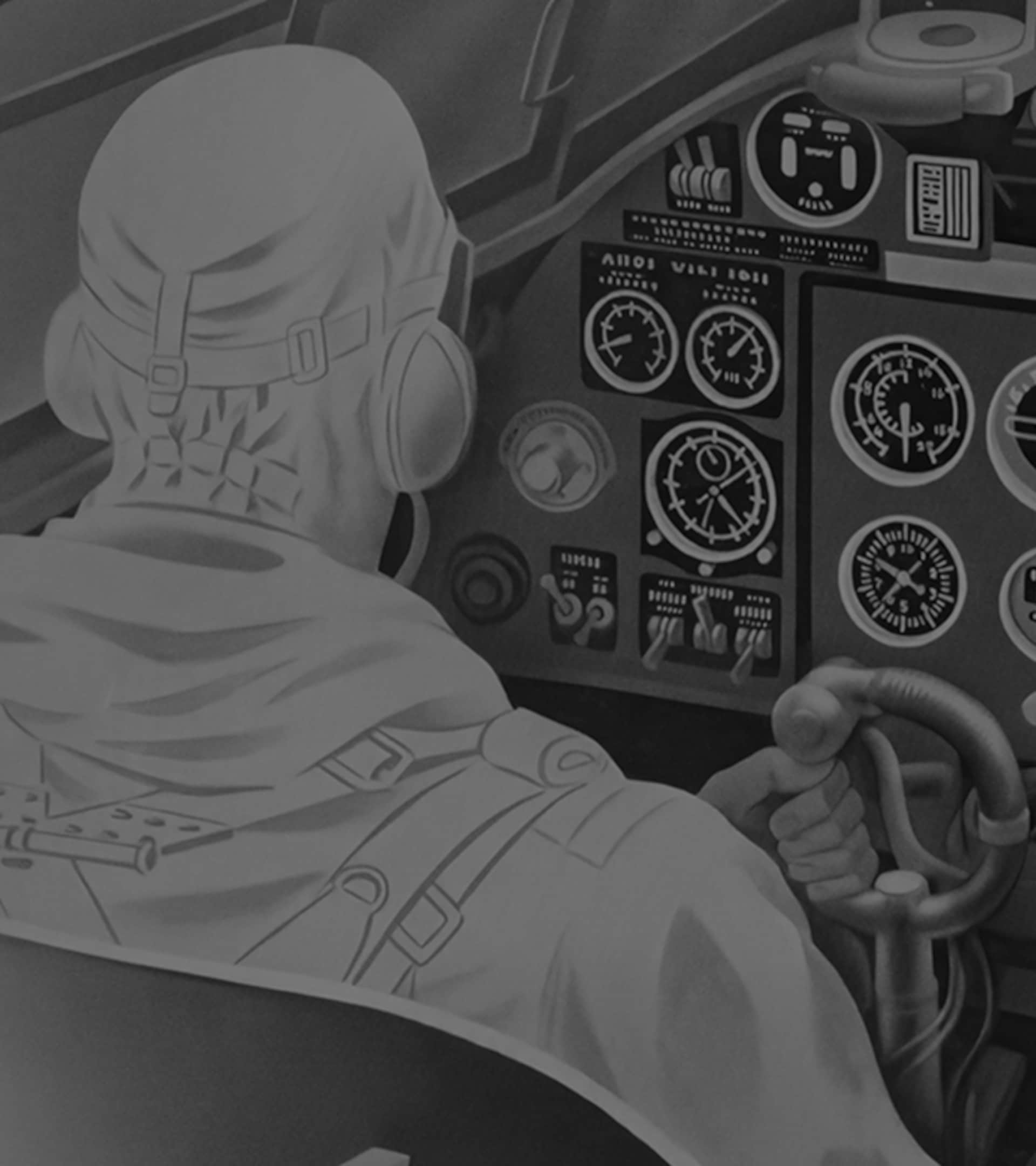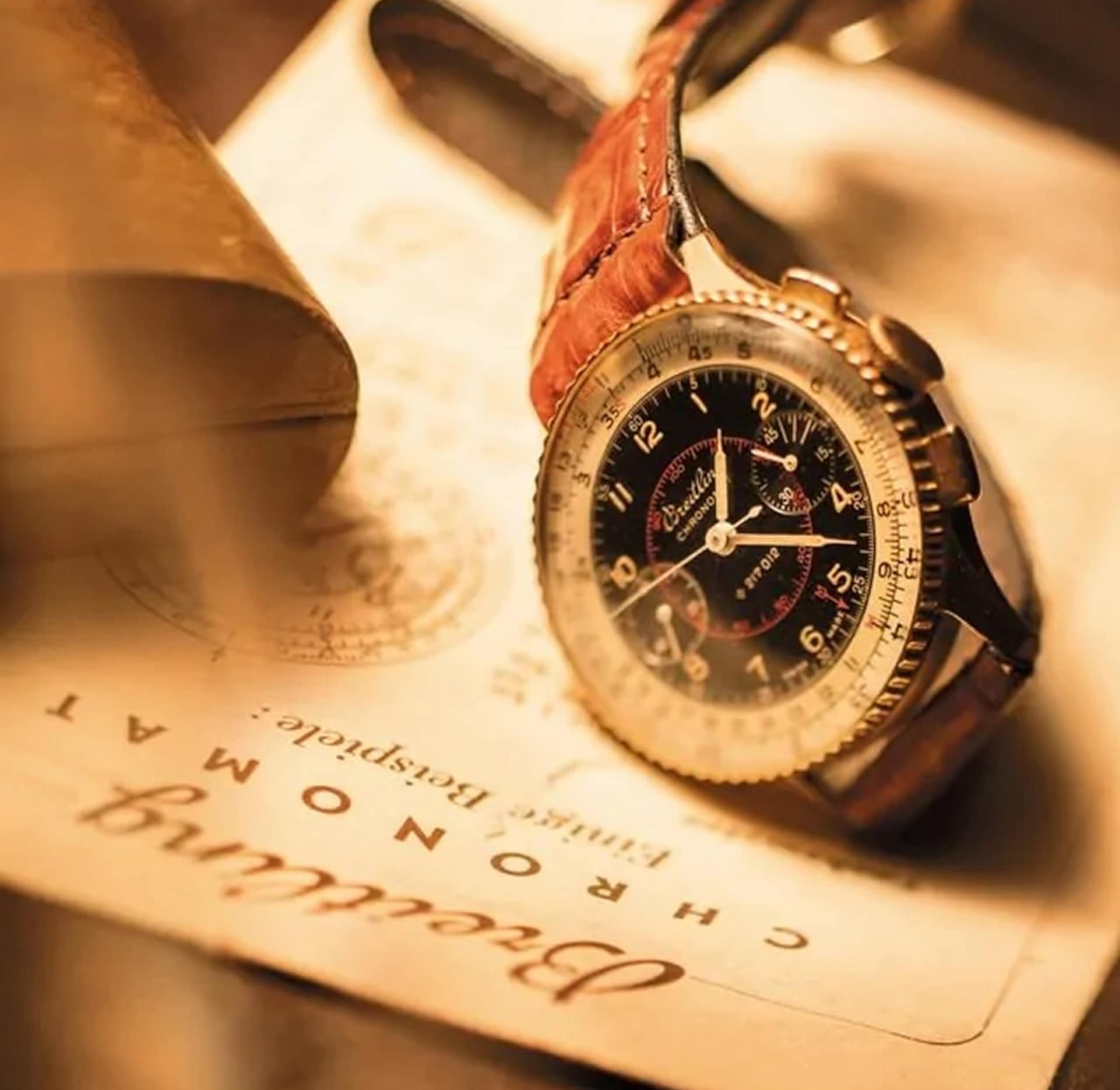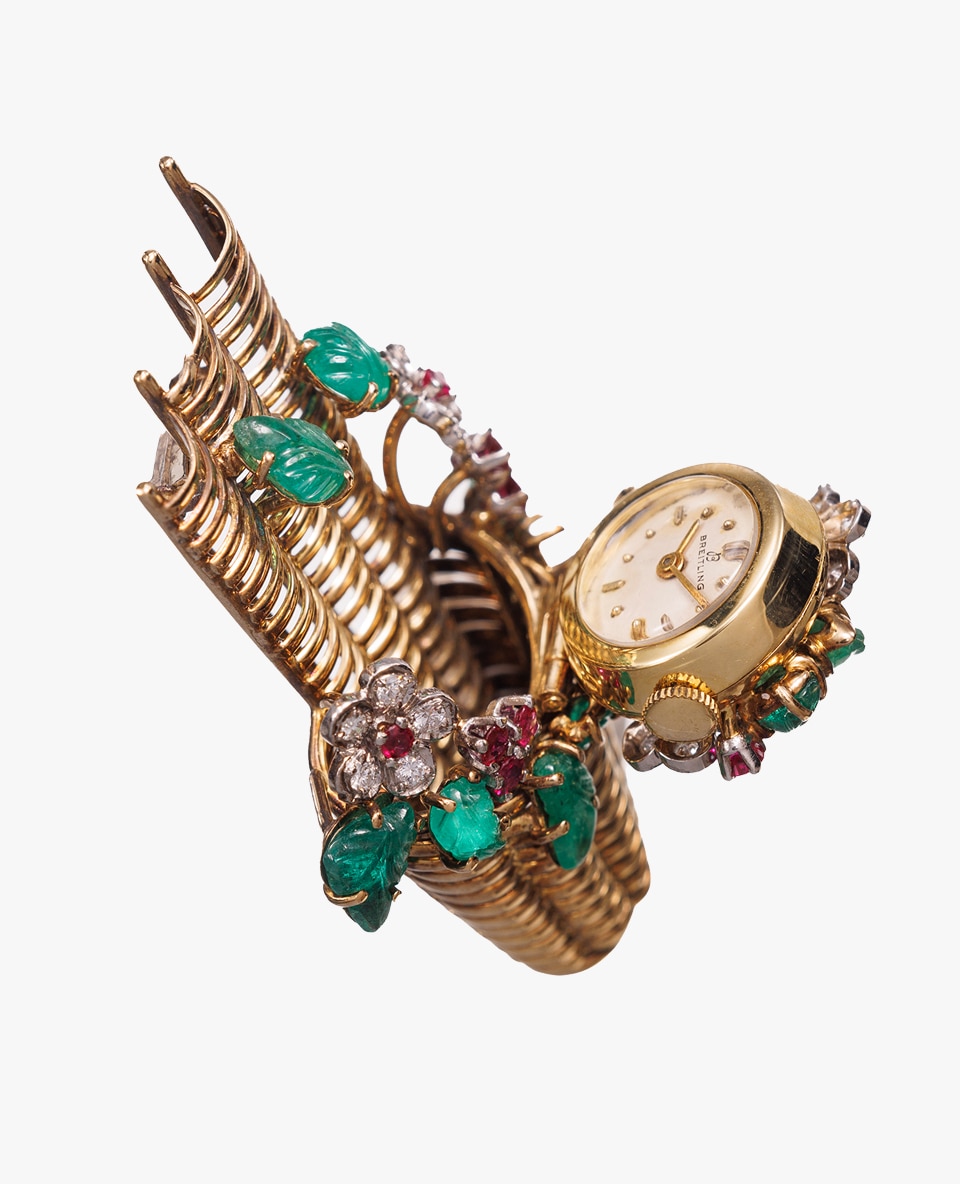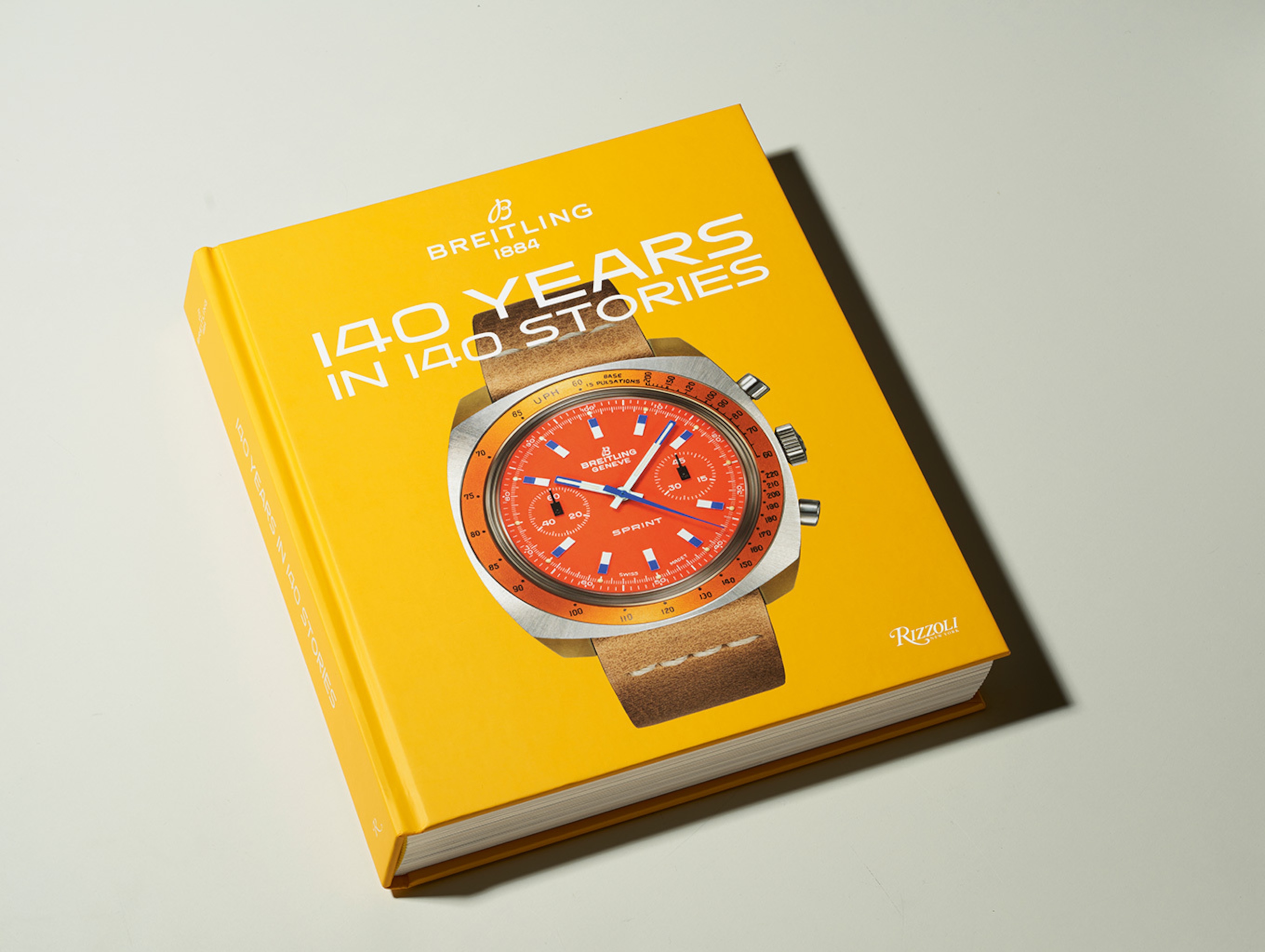

1940s-1950s
CHAPTER 2: FROM PURPOSE TO STYLE
FROM PURPOSE TO STYLE
Chapter 2
In 1932, Willy Breitling built on his family’s innovations and turned his focus to aviation, sensing its future significance. By the late 1930s, Breitling’s onboard chronographs became essential cockpit instruments, securing the brand’s reputation in flight. Despite WWII’s hardships, Willy—guided by personal taste—introduced Breitling’s first style-driven wristwatches, the Premier, Duograph, and Datora, ensuring practicality and refinement remained at the brand’s core.
1938
HUIT AVIATION DEPARTMENT
Breitling founded the HUIT Aviation department to meet military and civil aviation’s need for reliable onboard instruments. This specialized division developed, manufactured, and tested products in challenging conditions—on land and above the clouds. Its dedicated lab featured a micro-oscillograph for radioelectric movement inspection, temperature simulators from -40°C to +100°C, and vibration tables for stress-testing. The effort paid off in 1939, when the British Air Ministry commissioned Breitling to equip its Royal Air Force with onboard chronographs, establishing HUIT as a key aviation supplier just as the war was beginning.
The HUIT Aviation department was named for its instruments’ remarkable eight-day power reserve.


1940
CIRCULAR SLIDE-RULE
Breitling patented an innovative circular slide-rule chronograph, easily handling tachymeter, telemeter, pulsometer, and various mathematical operations. The 1942 watch that resulted, named “Chronomat” (a contraction of “Chronographe-Mathematique”) was a refined tool watch that balanced function and elegance with sleek lines, a slim profile, and a harmonious dial. It became a favorite among sports, industry, and technical professionals.
1943
THE PREMIER
Recognizing people’s fatigue with wartime austerity and the longing for a return to glamour, Willy Breitling introduced the Premier line—timepieces that transcended function, offering a discerning clientele a new standard of elegance. Building on this success, Willy then launched the Duograph, a sophisticated split-seconds chronograph for timing two simultaneous events, and later the Datora, which combined day, date, and moon-phase indicators in a balanced, stylish design. All three models featured refined dials, elegant cases—often in solid gold—and meticulous detailing, exemplifying Breitling’s commitment to both innovation and aesthetics.


The name “Premier” (French for “first”) was no coincidence. It honored Breitling’s first watch created with elegance as the priority—crafted not just for function, but for style. The name also reflects a commitment to being the best: in craftsmanship, materials, and design.


WORN BY WOMEN FIRST
Originally built for wartime military precision in tough flying conditions, the Premier line soon evolved to become a symbol of post-war glamor. Reflecting the stylish figure of Willy Breitling himself, Premier timepieces tapped into that zeitgeist with beautifully crafted watches in solid gold and stainless steel including the first ladies' chronographs.
Willy Breitling’s wife Beatrice was the ultimate watch influencer decades before the term was coined, not only acting as a sounding board for many key decisions but also as the inspiring “epitome of grace and glamor,” as her son Gregory would later recall.
Throughout the 1940s and ’50s, Breitling expanded its women’s offerings by rolling out an array of dainty cocktail and jewelry watches, as well as timepiece brooches, pendants, and even money clips. The “Vigneronne” is a defining example: a brooch with a hidden timepiece crafted in 18-karat gold, diamonds, rubies, and emeralds. It was described in its catalog entry as “a faithful reproduction of a Swiss grape-gatherer’s pannier.”




